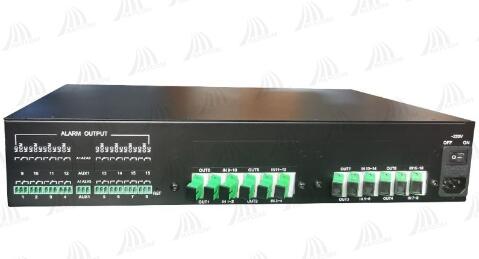What is Distributed Acoustic Sensing (DAS)?
Distributed Acoustic Sensing (DAS) is a technology that enables continuous, real-time measurements along the entire length of a fiber optic cable. Unlike traditional sensors that rely on discrete sensors to make measurements at predetermined points, distributed sensing utilizes optical fibers.
Distributed Acoustic Sensing (DAS) is a technology that enables continuous, real-time measurements along the entire length of a fiber optic cable. Unlike traditional sensors that rely on discrete sensors to make measurements at predetermined points, distributed sensing utilizes optical fibers. The optical fiber is the sensing element. These systems allow sound signals to be detected over long distances and in harsh environments.
Distributed Acoustic Sensing Technology
Typically, DAS technology uses standard telecom fiber optic cables and only requires specialized fibers at high temperatures (above 100°C). The sensing fibers are usually based on single-mode fibers, although there are some special applications that use multimode sensing fibers.
DAS systems typically have a range of up to 50 km per sensing fiber, and each interrogation unit usually has 1 or 2 channels that can operate simultaneously.

Distributed Acoustic Sensing Theory and Applications
Measurement Principle
Distributed acoustic sensor interrogation units transmit laser pulses into an optical fiber. As the light pulse propagates along the fiber, interactions within the fiber result in the reflection of light known as backscattering, which is determined by small strain (or vibration) events within the fiber, which in turn are caused by localized acoustic energy. This backscattered light is returned along the fiber to the interrogation unit, where it is sampled at the interrogation unit at a Rayleigh frequency. The time taken by the laser pulse allows the backscattering events to be mapped precisely to the fiber distance - this is called optical time-domain reflectometry.
Spatial resolution and spatial sampling period
The spatial resolution is determined primarily by the duration of the emitted pulse, with 100ns pulses providing a 10m resolution being typical. The amount of light reflected is proportional to the pulse length, so there is a trade-off between spatial resolution and maximum range. To increase the maximum range, longer pulse lengths are required to increase the level of reflected light, but this results in greater spatial resolution. Typically, most systems have a spatial resolution of 5-10m.
Comparison of DAS with other fiber optic distributed sensing systems
There are many other distributed fiber optic sensing techniques that rely on different scattering mechanisms and can be used to measure other parameters.
Brillouin-based systems are commonly used to measure distributed strain and temperature.
Brillouin scattering is much weaker than Rayleigh scattering, so the reflections of multiple pulses must be summed to make a measurement.
Raman-based systems are often used for temperature measurements, while DTS systems are usually based on Raman techniques. Raman scattering is even less intense than Brillouin scattering, so it usually takes an average of seconds or even minutes to obtain reasonable results. Therefore, Raman-based systems are only suitable for measuring slowly changing temperatures.
Data acquisition, signal processing and visualization
Because distributed acoustic sensing systems generate large amounts of data, it is critical to develop a strategy for data management, processing, and visualization.
Typically, the interrogation unit is networked to a processing unit (industrial PC or server) that manages data storage and processing. There is usually a rolling buffer for storing the raw data, as it is rarely practical to store more data.
The processing unit is programmed with a series of intelligent algorithms for interpreting the raw data and analyzing it for matches to predefined events such as intrusion events or pipe leaks. The fiber optic sensing cables will be divided into multiple zones where specially selected algorithms will be chosen and alarms assigned within each zone.
There are multiple ways to visualize these events. One is to use DTS-specific visualization software, which can, for example, display the fiber path based on a site map or diagram, and if an event occurs, it will highlight the location of the event and display an alert. Another option is for the DAS software to interface with an existing 3rd party SCADA, control or security software package, in which case the event will be highlighted in the 3rd party software.
Distributed Acoustic Sensing Applications
Distributed acoustic sensing is a very versatile and evolving technology. Some of the more common application areas we see today include:
Power cable monitoring
Submarine cable monitoring
Overhead cable monitoring
Perimeter intrusion detection systems
Fire detection